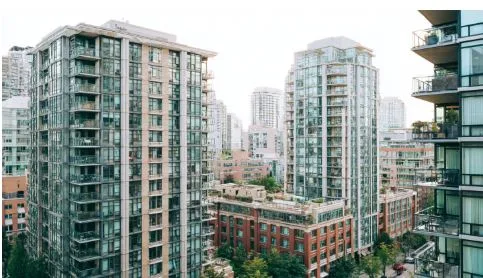The Role of Acoustic Measurement in Modern Smart Cities
Cities are getting louder. With growing populations, constant traffic, new construction projects, and a busy nightlife economy, urban noise has reached record levels. For decades, noise pollution was seen as an annoyance but not a serious public health threat. That perception has changed. Today, health organizations and urban planners recognize that noise is more than a minor inconvenience—it’s a significant environmental stressor that affects millions of people daily.
Studies have linked chronic exposure to high noise levels with cardiovascular problems, sleep disturbances, reduced cognitive performance, and increased stress. For residents, these effects can quietly erode quality of life, especially in dense neighborhoods where sources of noise are constant. Modern cities, aiming to be smarter and more livable, are turning to advanced tools to measure and manage noise more effectively. This is where acoustic measurement plays a central role, offering precise data on when, where, and how sound impacts urban spaces.
As technology advances, cities can now monitor noise in real time and integrate that data into their planning processes. This shift has transformed noise monitoring from a reactive process—responding to complaints after the fact—into a proactive system that prevents issues before they become widespread. In the age of smart cities, noise is no longer just a background condition; it’s a measurable, controllable factor in shaping healthier and more efficient urban environments.
Understanding the concept of acoustic measurement in urban planning
Acoustic measurement refers to the process of quantifying sound in an environment using specialized tools and techniques. In urban planning, this means collecting accurate data on the intensity, frequency, and duration of noise from various sources—traffic, construction, industrial activity, and even human gatherings. This data is crucial for designing spaces that balance the energy of a city with the comfort of its residents.
The tools for acoustic measurement range from portable sound level meters used in spot checks to permanent sensor arrays that feed data into centralized city databases. Advanced systems can identify specific noise sources, track their movement, and log patterns over time. These insights help planners determine where to place sound barriers, how to design building facades for noise reduction, and where green spaces can act as natural sound buffers.
Urban planners and engineers are also adopting predictive modeling tools that use historical sound data to forecast future noise conditions. This allows them to plan infrastructure projects with a better understanding of long-term impacts, ensuring that developments not only meet current standards but also remain sustainable in the face of population growth.
Integration of noise data into smart city infrastructure
In a smart city, noise data doesn’t just sit in a report—it becomes part of an active, interconnected system. Acoustic sensors installed throughout the city feed continuous data into centralized analytics platforms. These systems integrate with other urban data sources such as traffic management, public transit scheduling, and emergency response networks.
Once in the system, the data can be processed using big data analytics and AI algorithms. Cities can identify noise hotspots in near real time, spot emerging trends, and anticipate potential problems before they escalate. For example, an uptick in construction noise in a residential district might trigger automated notifications to local authorities or even adjust work schedules to minimize disruption.
Cities like Barcelona, Singapore, and Amsterdam have already integrated noise monitoring into their smart city strategies. In Barcelona, a network of acoustic sensors provides real-time data that city officials use to enforce noise regulations and plan public events more responsibly. Singapore’s urban planners use noise data to inform traffic routing decisions, while Amsterdam integrates it into environmental quality dashboards that are accessible to the public.
Applications that improve daily life in smart cities
Traffic flow optimization with real-time noise monitoring
Traffic is one of the biggest contributors to urban noise, but it’s also one of the easiest to track in real time. By connecting acoustic sensors to traffic management systems, cities can detect sudden spikes in noise that often indicate congestion, accidents, or aggressive driving patterns. When noise levels in a certain area rise above a preset threshold, the system can investigate the cause and automatically adjust traffic signals or reroute vehicles to less congested streets.
Some public transit agencies have gone further, integrating noise data into bus and train scheduling. If sensors detect unusually heavy traffic noise along a key bus corridor, dispatch systems can adjust routes or send additional vehicles to prevent overcrowding. This kind of dynamic traffic management doesn’t just reduce noise—it improves travel times, reduces fuel consumption, and lowers stress for both drivers and passengers.
Enhancing public safety through acoustic event detection
Noise monitoring in smart cities isn’t just about reducing decibels—it can save lives. Acoustic event detection systems are trained to recognize distinct sound patterns, such as gunshots, explosions, or vehicle collisions. When these events occur, the system pinpoints the location and alerts emergency services within seconds.
This technology is already in use in several major cities. In New York, for example, an acoustic detection network helps police respond to gunfire incidents even when no one calls 911. In London, sensors in public spaces can detect the sound of breaking glass and immediately alert security teams. The speed and precision of these systems mean that first responders can act quickly, potentially preventing further harm and improving overall safety.
Creating healthier urban environments through noise reduction policies
Long-term noise control requires more than just data collection—it needs policy action. With accurate measurements and continuous monitoring, city governments can develop evidence-based strategies for noise reduction. One common approach is the creation of green buffers—parks, tree-lined streets, and landscaped sound barriers that naturally absorb and block sound. These not only improve acoustic comfort but also enhance air quality and provide recreational spaces.
In residential areas, data from acoustic measurement systems helps planners identify where noise insulation is most needed. This can lead to targeted installation of soundproofing materials in buildings, as well as the construction of noise barriers along highways or busy rail lines. Over time, these measures can significantly improve the quality of life for residents.
Some cities also use noise data to set time restrictions for certain activities, like construction work or late-night deliveries. By aligning policies with real-world sound patterns, urban planners can strike a balance between economic activity and community well-being.
The role of acoustic measurement in smart cities will only grow as technology becomes more sophisticated and affordable. We’re moving toward a future where noise management is as integral to urban planning as traffic control or waste management. With the right tools, cities can create spaces that are vibrant and active without sacrificing residents’ health and comfort.
As urban populations continue to climb, the challenge isn’t just building more infrastructure—it’s building it better. By embedding noise monitoring into the very fabric of city systems, we can ensure that smart cities are not only connected and efficient but also livable and peaceful.





